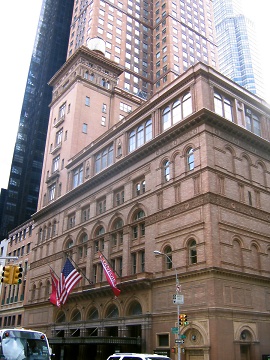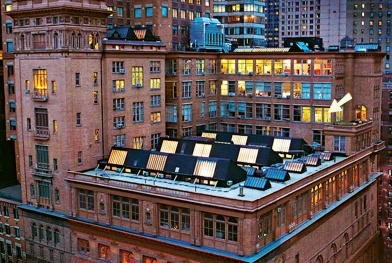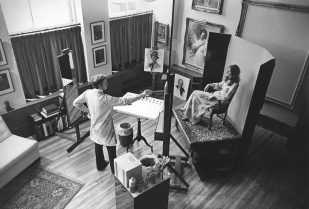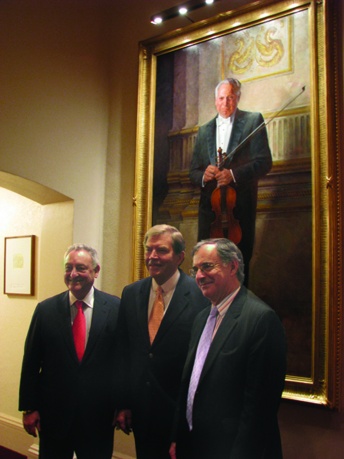| |

Andrew Carnegie's vision was to
create, at this location, in addition to the world-famous concert
hall, a multi-arts complex in which all of the arts could flourish.
|


Andrew Carnegie and his architect,
Henry Hardenburgh, added two towers of studios, surrounding
the original concert hall. These 170 spaces, of varying sizes,
included the very best north-light painting studios in New York.
My first studio, 1011, is marked with an arrow. Photograph
by Joseph Astor.
|
|
| |

My wife Elizabeth and I (here I
am painting her portrait) leased Studio 1011 in the South Tower
of Carnegie Hall in 1975. It was a marvelous, high-ceilinged
room, with stunning views of Central Park to the north, and
the Hudson River to the west.
|

Bill Cunningham |
|
|
|
| |

As a token of appreciation to Carnegie Hall for the benefits
of working within its walls for more than three decades, I painted
this portrait of the man who saved Carnegie Hall from demolition
in the 1960's: violinist Isaac Stern. Here I'm posing with the
Chairman of Carnegie Hall, Sanford Weill, and the Artistic and
Executive Director, Sir Clive Gillinson.
Click here to view the complete painting
|
|
|

